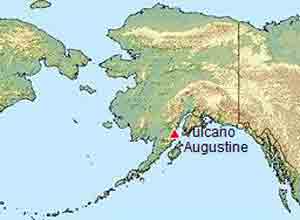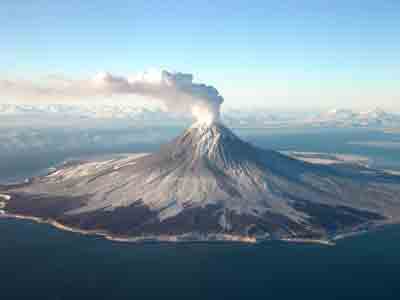Volcanic Ash sample Raw Minerals Lapilli Pumice Lava Bombs Stones Rocks for Collection.
Rare specimen of Volcanic Sand erupted from the Mount St. Augustine Volcano in Alaska, consisting of coarse and fine grained particles, collected in Anchorage after March 27, 1986 eruption.
An inusual ash, as it is made up of several different rock and minerals types, that reminds us of similar material from Mount St. Helens.
Available on our website, besides ashes, pumice and bombs, also various volcanic rocks, such as Apache Teardrops, sulfur, obsidian, tuff, crystal chalk, etc.
Volcanic ash consists of small tephra, which are bits of pulverized rock and glass created by volcanic eruptions, less than 2 millimetres (0.1 inch) in diameter . Ash is created when the usually violent nature of an eruption involving steam results in the magma and solid rock surrounding the vent being torn into particles of clay to sand size.
Every ash samples is labelled and bagged in a vial with cap (mm 44 x 10), so thay can easily be removed if required for study under a microscope.
As with all volcanic ash, the material should be handled with care and not inhaled.
 The St. Augustine volcano, which is part of the Aleutian Chain, consists of a lava dome and a lava flow complex, surrounded by pyroclastic debris.
The St. Augustine volcano, which is part of the Aleutian Chain, consists of a lava dome and a lava flow complex, surrounded by pyroclastic debris.
The volcano, which is the uninhabited island of the same name (Augustine Island), has an almost circular shape with an area of 83.872 km²; it is 12 x 10 km wide, with an almost symmetrical central peak at an altitude of 1,260 m.
The island-volcano is located in Alaska (USA), in Kamishak bay, at the southern entrance of Cook's Bay. The city of Anchorage is 280 km north-east.
The island consists mainly of deposits of eruptions from the past. The scientists were able to discern that the collapse of the previous cathedral caused large avalanches.
The summit consists of several overlapped lava dome complexes formed during many

historical and prehistoric eruptions. Most of the fragmentary debris displayed along its slopes includes angular blocks of andesite.
The deposits on the lower sides recall both topographically and lithologically those of the great avalanche of landslides or debris that began the spectacular eruption of Mount St. Helens on May 18, 1980.
Captain James Cook of the Royal Navy reached the island on May 26, 1778, the day of Saint Augustine and called it Saint Augustine Island; at the end of the eighteenth century in the maps it was referred to as Mount Saint Augustine. The Spanish navigator Ignacio de Arteaga y Bazán registered it in 1779 with the name of Pan de Azúcar (sugar cake).
Captain Teben'kov of the Russian Imperial Navy, in his 1852 map, called it Čërnoburoj, which in Italian means "dark brown" and, in 1867, the National Geodetic Survey of the USA indicated it with the corresponding English term Blackbrown Island.
Eruptions:
1883: first eruption documented by contemporary writings
1935
1944
1963-64: October 11, 1963, a series of eruptions occurred over a period of 10 months, the largest of which occurred on November 17 and August 19, 1964
1971
1976: eruptive and explosive activity between 22 and 25 January; an intense eruption on 6 February followed by others in April of the same year
1986: On March 27, 1986, the eruption deposited ash on Anchorage and interrupted air traffic in central and southern Alaska
1994, On January 11th the St. Augustine volcano broke out at 1:44 pm and 2:13 pm
2005: in mid-December 2005 a volcanic activity began to spring with a plume of sulfur dioxide vapor and a new ash coating on its currently snow-covered peak, along with hundreds of small seismic shocks that resulted in a major earthquake on January 11 2006, followed by explosive phenomena that reached 10 km in height; other powerful explosions followed on 13 and 14 January with lava eruptions in the following days.
The eruption consisted of four "phases", which continued until March 2006. Several columns of ash were generated, reaching 14 km in the atmosphere. The numerous explosions created a crater 20-30 meters wide in the new lava dome.
On September 22, 2007, the Alaska Volcano Observatory reported that surface seismic activity had increased during the week. However, the activity was below its level during the months prior to the 2005-2006 eruption.



